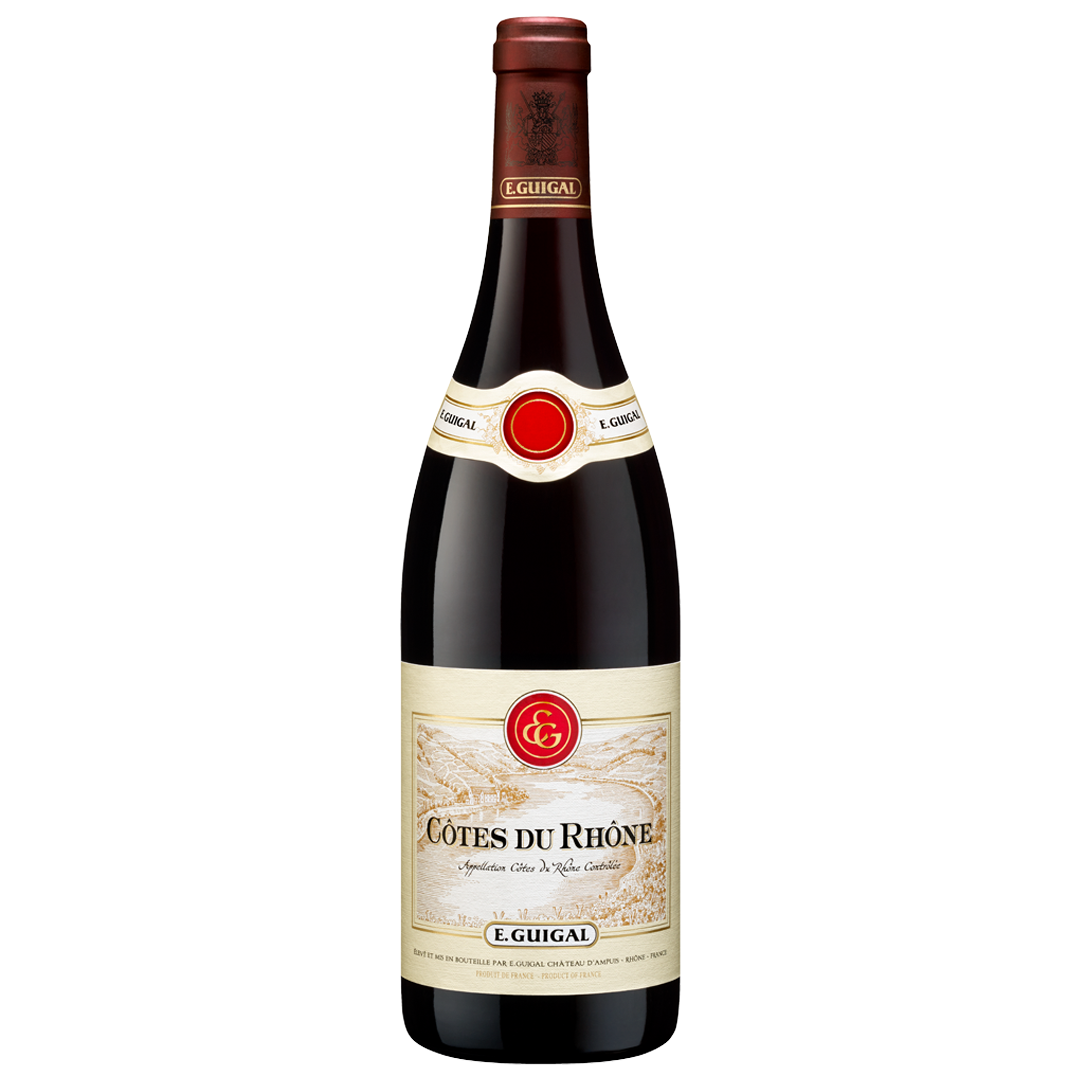E. Guigal Cote Du Rhone Rouge 2022
E. Guigal Cote Du Rhone Rouge 2022
國家: France
區域: Rhone Valley
數量: 750ml
Winery Background and History
Établissements Guigal was founded in 1946 by Étienne Guigal in Ampuis in France’s Northern Rhône. The estate is family-operated, passing from Étienne to his son Marcel, and more recently with substantial involvement from Philippe Guigal. Guigal earned its reputation through premier wines from Côte-Rôtie, Hermitage, Saint-Joseph, and other prestigious Rhône appellations. Over many decades, Guigal invested in vineyard holdings, terroir expression, winemaking innovation, and quality control. Today it stands as one of the benchmark Rhône producers, producing both high-end cuvées and more approachable regional wines, all held to consistent standards.
Producer and Wine Maker
Producer is Établissements Guigal. The winemaking is led by Philippe Guigal, who oversees both vineyard sourcing and vinification decisions. Guigal works with a network of growers (around 80 for this Côtes du Rhône Rouge in 2021) to secure grapes from varied terroirs. The winemaker’s role includes blending from multiple plots, supervising fermentation, managing oak aging, and ensuring the final wine reflects both fruit vitality and structural balance.
Vineyards and Micro Climate
The vineyards contributing to this wine are on varied soils: sedimentary soils, limestone, granite, alluvial deposits, and pebbles. The vines have an average age of ~35 years, yielding relatively low quantities per acre (producing concentrated fruit). The climate is continental-Mediterranean: hot summer days tempered by cooler nights, which helps preserve acidity and aromatic freshness. Microclimates across the plots bring subtle variations in ripeness, which Guigal takes advantage of in the blending.
Vinification & Aging Methods
Fermentation is temperature controlled, followed by extended maceration on the skins. After fermentation, the wine is aged for ~18 months using oak (a mixture of French and sometimes American oak barrels/foudres depending on vintage). The oak aging is used to lend complexity, structure and to integrate tannins. Blending over the course of aging ensures harmony.
Tasting Notes
Deep, dark red colour. The nose offers rich aromas of black cherries, dark berries, violets, and spicy notes (pepper, licorice) with some earthy undertones and subtle mineral or stone-inspired hints. On the palate it is full-bodied yet balanced: rounded and smooth tannins, ripe fruit, some dark plum and cherry flavours, with spice and a touch of smoky or iron-stone character. The finish is long, elegant with good finesse, lingering fruit and spice.
Food & Wine Pairing
Pairs excellently with grilled or roasted red meats (lamb, beef), game, rich stews. It also works with charcuterie, peppered sausages, hearty casseroles, or roast poultry with herbs. Strong cheeses (like aged Gouda, Comté, Manchego) also complement its body. Dishes with garlic, thyme, rosemary, black pepper enhance its spicy profile.
Service Methods and Temperatures
Serve at 16-18 °C (60-65 °F). Use a large red wine glass to allow aromas to open up. Decant for 30 minutes to an hour can enhance aromatic development especially if recently opened. Keep wine at stable temperature; avoid very cold cellars immediately prior to serving to allow full flavour expression.
Storage and Aging Potential
While drinkable upon release, this wine can improve with 4-6 years of bottle aging. Under good storage conditions (12-14 °C, stable humidity, minimal temperature variation, away from light), it may hold well for up to 7-8 years. After that, fruit will gradually fade, while tertiary aromas like leather, dried herbs, earth will become more pronounced.
Grape Varietals & percentage used
Syrah ~ 50 %
Grenache ~ 40 %
Mourvèdre ~ 10 %
ABV (Alcohol by Volume)
15 %
Scores
-
Wine Enthusiast: 92
-
James Suckling: 90
-
Wine Spectator: 89
無法載入取貨服務供應情況
有 120 件庫存
查看完整資訊

